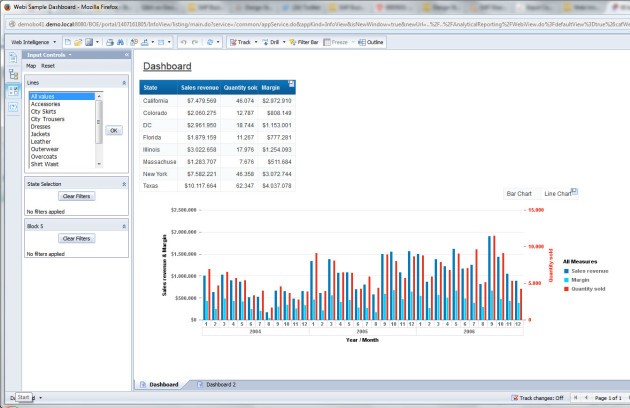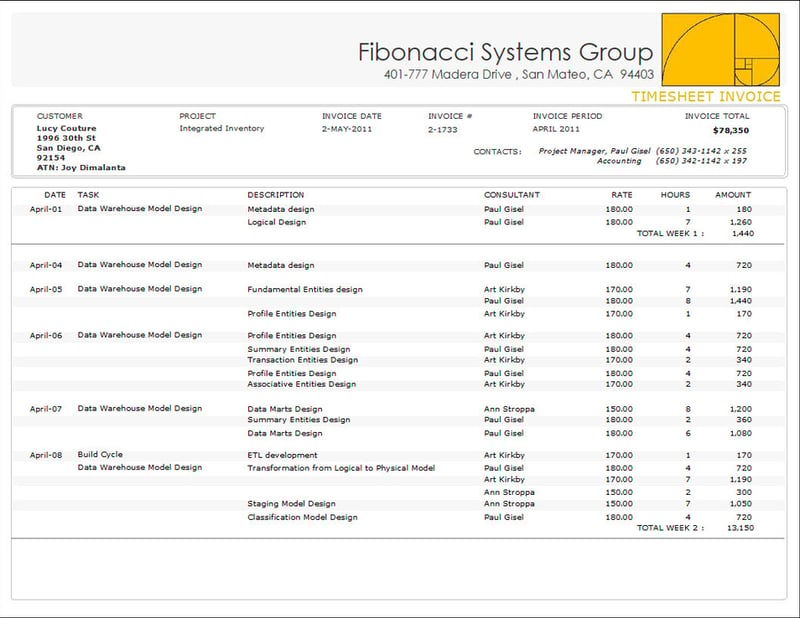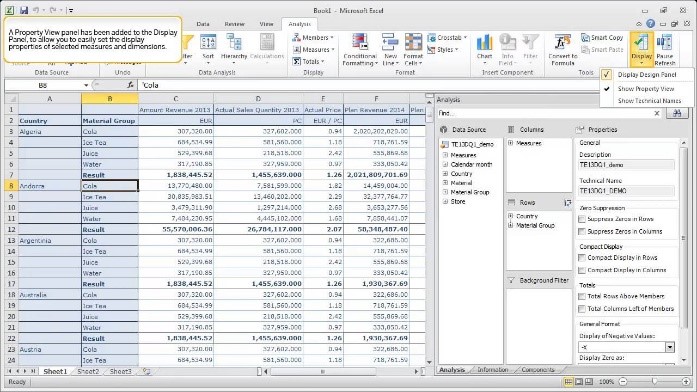What’s the difference between SAP BI, SAP BW, SAP BO?
I have been evolving in SAP’s Business Intelligence world for twenty years, and for those same twenty years, people have been asking these same questions: “What’s the difference between SAP BI, SAP BW, SAP BO, or is it SAP BOBJ? Are they notions or products, and, which of those do we really need?”
A Little Background History
-
SAP BI – Business Intelligence
In fact, it is pretty simple. BI stands for Business Intelligence, it is a generic term for what is pertaining to decision-making, data analysis, and reporting. The term BI had nothing to do with SAP... That is until the moment the software publisher associated that acronym to their offering after purchasing additional applications.
-
SAP BW – Business Warehouse
Indeed, originally, the only SAP application positioned in business intelligence was SAP BW. Still comprised in the publisher’s portfolio after 20 years, SAP BW is a data warehouse intended for loading, transforming and storing data modelled into cubes for analysis purposes. Although this offering comprises a query and data presentation editor, it had difficulty competing with other solutions specialized in this sector in the mid-2000s. For that reason, in 2007, SAP bought back Business Objects as well as its suite of information formatting applications thereby consolidating its position as a key player on the business intelligence market.
-
SAP BO or BOBJ – Business Objects
SAP then takes advantage of the acquisition of Business Objects and of the need to clarify the positioning of this new package to use the very trendy term “BI” and thus label some of their products. From then on, SAP BW would be named SAP BI for the storage solution, whereas Business Objects would be renamed SAP BO or BOBJ (depending on which side of the Atlantic you are) for data formatting.
Unfortunately. It is also at that time that confusion arises in the minds of clients who have difficulty understanding the world of ERPs; big players’ acquisition games led to the creation of more and more applications with similar functionalities, sometimes even within the same portfolio, names change, strategic realignments happen ... in short, between SAP BI, SAP BW, SAP BOBJ, it becomes difficult for the lay person to understand the specificity of each product!
| BIW | 1.2A | Oct-1998 |
| BIW | 1.2B | Sep-1999 |
| BIW | 2.0A | Feb-2000 |
| BIW | 2.0B | Jun-2000 |
| BIW | 2.1C | Nov-2000 |
| Name Change, BIW to BW | ||
| BW | 3.0A | Oct-2001 |
| BW | 3.0B | May-2002 |
| BW | 3.1 | Nov-2002 |
| BW | 3.1C | Apr-2004 |
| BW | 3.3 | Apr-2004 |
| BW | 3.5 | Apr-2004 |
| Name Change, BW to BI (and back) | ||
| BI | 7.0 | July-2005 |
| BW | 7.01 | Oct-2008 |
| BW | 7.02 | Aug-2009 |
| BW | 7.3 | Nov-2010 |
| BW | 7.31 | Aug-2011 |
| BW | 7.4 | May-2013 |
| BW | 7.5 | Oct-2015 |
Source: https://wiki.scn.sap.com/wiki/display/BI/Overview+of+SAP+History+and+BW-BI+Evolution
This did not escape SAP’s attention; but they will still wait another three years to retract and clearly communicate the specificities of their business intelligence products and rationalize their related tools. Finally, it is in 2008 that SAP goes ahead and changes for one last time, or so we hope, the name of those products.
- SAP BI (previously BW) becomes SAP BW again
- SAP BOBJ... Stays SAP BOBJ
- All this constitutes the SAP BI offering
SAP BW & SAP BOBJ – The Functionalities
As a result, SAP is present on today’s business intelligence market with two complementary offers.
- SAP BW is the equivalent to the black box in which data will be stored after being loaded from different systems, databases, etc., and modelled to be easily consumed by subsequent SAP BOBJ reporting applications
- SAP BO or BOBJ essentially comprises reporting applications, the most popular being:
- WEBI which caters to specific reporting needs:

- Crystal Report provides powerful data layout functionalities for publishing and editing formatted reports:

- Analysis for Office for data analysis within a super powerful Excel environment:

- WEBI which caters to specific reporting needs:
Briefly, here is what one should understand when hearing about SAP BI:
| SAP BI | |
| SAP BW | SAP BOBJ |
|
|
What Should One Suggest to Customers Today?
It is now easier for clients to find their way around. We use SAP BW for storage, and SAP BOBJ for formatting... Careful, as this is only true if we are talking about the on-prem BI solution. With the rise of cloud computing, SAP shuffles the cards once more as all new solutions are now made available to clients on the cloud.
In fact, there are no single answer in terms of BI solutions as you are required to take into consideration client issues, architecture and, long-term IT strategy. See also How to Extract KPIs From Your SAP ERP (video).
A new and improved offering: SAP Analytics Cloud (SAC)
As many others, SAP has worked relentlessly at developing cloud-based solutions to satisfy these last few years’ growing demand. As SAP S/4HANA now offers a cloud-based version, SAP S/4HANA Cloud, on-premises SAP BI now offers an alter ego cloud solution: SAP Analytics Cloud.
This solution, created in the SAP laboratories, succeeds in dusting off the old traditional SAP BI offering: accessible on line as a SaaS, SAP Analytics Cloud (SAC) is a comprehensive application that comprises the three following functions: data analysis, planning and predictive analysis.
SAP reached a huge commercial success with this; users really appreciate its flexibility, the possibilities of intelligent interactive dashboards, not to mention the speed at which it can be implemented! Cloud computing is a synonym of “no installation required,” a good Internet connection will suffice to format or visualize any reports on any device.

SAP Data Warehouse Cloud
Available to clients since October 2019, SAP Datawarehouse Cloud fills the data warehouse void left in the cloud and positions itself as the equivalent of SAP BW. This is not a simple application, but rather a pay-per-use service, able to transform data within a user-friendly environment.
We hope it is as successful as SAP Analytics Cloud! Find 5 Advantages of using SAP S/4HANA Cloud Software through this link.
What we need to remember:
SAP BI, SAP BW, SAP BO... The lingo will continue evolving. Thus, it is preferable to think in terms of major functions and retain the following three points, which we hope will remain unchanged for a few more years:
- Reporting? Of course! This goes hand in hand with a good data visualization application.
SAP Analytics Cloud proves to be a must on the market. - A company’s data warehouse? Eventually, if you need to combine various data, calculate complex indicators, all this over a three-year horizon.
SAP BW caters to that need, let’s wait a little bit longer before making up our minds about SAP Data Warehouse Cloud, which could take its place. - Business Intelligence? Points 1 and 2 are comprised within!
Download our whitepaper: "The Journey to the Intelligent Enterprise" and discover how to drive total customer experience, achieve a 15 – 20% productivity gain and transform the way we work and engage employees!







